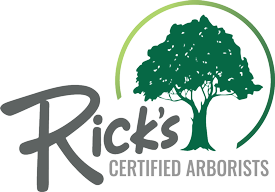White Prunicola Scale (Pseudaulacaspis Prunicola) can impact your trees and shrubs – favoring Cherry Laurel, Lilac, Willow, Red Twig Dogwood, Evergreen Privet, Holly, Boxwood, and Euonymus. Its presence may start out small, but it can grow rather quickly – and treatment can be tricky thanks to its wax-like shield of protection.
It doesn’t take long for this invasive hard scale insect to consume all the vital nutrients the tree had to offer, causing both health and growth to be jeopardized. Thankfully, we’ve got 5 treatment tips to help you save your plants from White Prunicola Scale.
Signs of White Prunicola Scale
Knowing how to accurately spot White Prunicola Scale is the first step. After all, you need the right diagnosis to know how to proceed with treatment. Look closely at the twigs and branches, paying careful attention to the underside of smaller branches.
- The yellowing of the leaves
- White circular covers with a yellow center
- The appearance of snowy clusters
- Premature leaf drop
- Dieback (signs of dying that start from the tips of the leaves/branches)
- Cracking or splitting of bark
Keep in mind that there are many things that may be plaguing your plants – and White Prunicola is only one of them. To ensure you have made an accurate diagnosis and that you are following the proper treatment methods, it is always a good idea to confer with a professional arborist.
White Prunicola Scale Treatment Tips
Once you have confirmed your plant is hosting White Prunicola Scale, it is time to take action.
Tip #1: Maintain a Healthy Plant
Although White Prunicola Scale can make its way onto any of its preferred hosts, it cannot thrive unless it is allowed to. A healthy plant is one that can be strong and stand against the infestation because preventative measures have been taken. This includes partaking in routine pruning and preventative sprays or treatments. The more attention you give your plant, the healthier it will be.
Tip #2: Use Horticulture Oil
Depending on the time of year – and if caught early – horticulture oil may help keep these pests from latching onto your plant. A good time to consider doing this would be during the early spring, after the emergence of “crawlers” also known as newly hatched scale. Be sure to spray it over all areas of the plant.
Tip #3: Hire an Arborist
Just as you would take your kids to the pediatrician and your car to the mechanic, an arborist is skilled in caring for and treating your plants. And this includes those battling White Prunicola Scale. Help give your trees and shrubs the best chance for survival by seeking treatment from an arborist.
An arborist understands the life cycle of these scales and will know just how to make the greatest impact – which often involves the use of an environmentally-friendly mix of insect growth regulator (IGR) and Horticultural Oil. For instance, these insects have babies known as “crawlers” three times per year. This is when they are most vulnerable. Being able to properly time the treatment to save your trees with the “crawler” hatch.
Tip #4: Take a Multi-Faceted Approach
White Prunicola Scale can be difficult to get rid of once an infestation is present. So the best thing you can do is to try a combination of different approaches. For instance, taking preventative measures, using properly timed Horticultural Oil sprays, investing in hiring a qualified arborist, and watering during drought like conditions will promote healthier plants that are more resistant to infestation. Combating the problem from different angles gives you the advantage.
To learn more about how an arborist like Rick’s Certified Arborists can protect your landscaping from White Prunicola Scale and other pests, contact us today at 610-840-2655. Or, request a quote online.


Comments are closed.